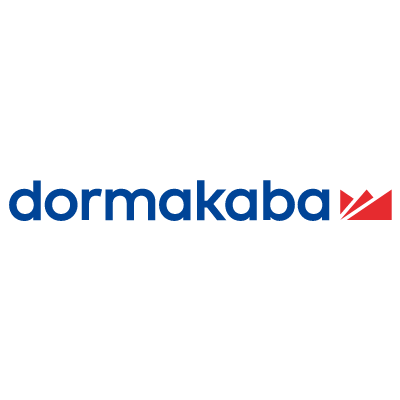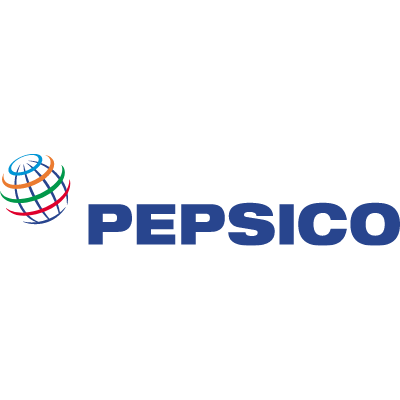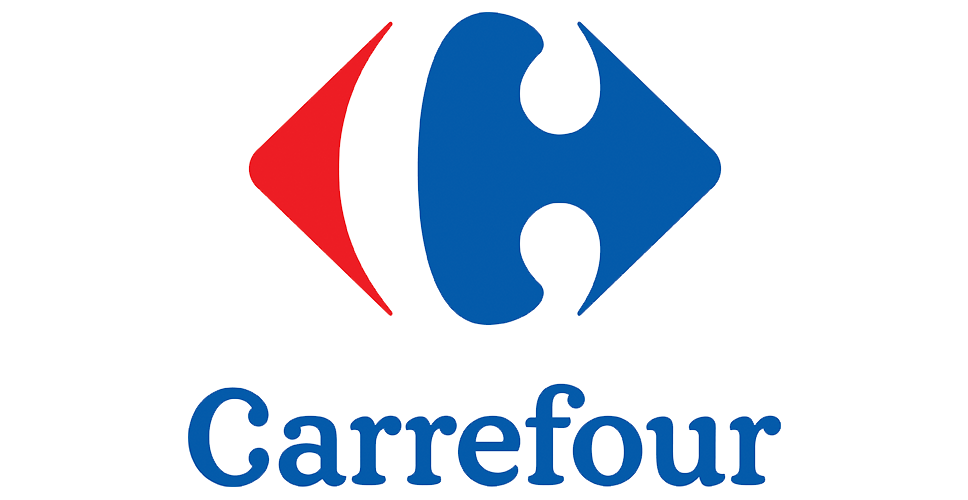If you are planning to modernize your outdated software, check out our comprehensive guide to find highlights of modernization strategies and examples of companies that went through this process.
What is legacy software?
Legacy software or a legacy system or legacy application is an obsolete or outdated program that is still critical to day-to-day business operations. Legacy systems are typically found in monolithic architecture. The tightly-coupled environment usually creates an unstable situation due to compatibility limitations with current IT infrastructures. While these systems may still remain functional, they are expensive to maintain and end up burdening companies with their exorbitantly high operation costs.
Why modernize legacy software?
Some of the benefits of modernizing legacy applications include:
Maintenance and support: While most companies assume that the cost of upgrading software is expensive, the reality is that the cost of maintaining and supporting an outdated application is exorbitantly expensive. A simple overhaul to an existing platform can therefore be cost-effective in the long run.
Integration with other tools: Outdated systems are usually incompatible with modern systems that are critical for business growth. Modernization can help integrate an existing platform with new software tools and services, making it more adaptable, scalable, and easy to update.
Security and privacy: Old platforms are prone to cyberattacks since outdated systems are difficult to update and manage. Upgrading them helps to enhance security and privacy by minimizing cyberattacks and data breaches, which could otherwise result in data and customer loss.
Organizational agility and efficiency: New technologies offer better scalability, stability, and performance than old business models. Taking advantage of modern infrastructure means that business applications can seamlessly optimize the operating system and newer hardware of such platforms, resulting in improved operational efficiency and organizational agility.
Compliance with regulations (e.g., GDPR): Companies must adhere to the regulations of the territories in which they operate. For instance, the General Data Protection Regulation (GDPR) in the European Union consists of a set of rules on how companies should handle information. So, when a business runs on outdated technology, it will most likely be noncompliant with such regulations.
Lost business opportunities: Outdated platforms are often slow and unreliable, and offer poor user experience and costly investment burdens that can result in lost business opportunities. However, a modern infrastructure can transform a platform’s functionality, user experience, adaptability, and scalability, leading to more business opportunities.
Legacy software migration: strategies
To help companies achieve application modernization with almost zero downtime or risks, here are the 7Rs of legacy software migration strategies:
#1 Encapsulate
Encapsulation is the process of creating a layer between applications and users, thereby exposing the app’s functionality via APIs. The approach offers a new interface for outdated components, assisting to leverage the functionality of the applications. Developers use it to build new apps on top of old legacy systems without altering the underlying code, and it is achieved by using microservices.
#2 Rehost
This is an approach that facilitates easier migration of the entire system to a new cloud, hardware, or virtual environment. The rehost migration process does not change existing features, code, or the system’s functions. In most cases, it is an automated process involving tools. It is a relatively quick method and is known as the lift and shift of apps, allowing organizations to seamlessly migrate apps into new cost-effective or scalable infrastructure.
#3 Replatform
This is used to migrate application components into a new modern platform with minimal code changes. While replatforming, you do not have to change the system’s core features or code. This is attractive to businesses that do not want to significantly modify their existing systems or are worried about how their users will adapt to the new system. It is a less disruptive approach and usually involves minimal code changes.
#4 Refactor
This is a modernization strategy that involves improving an old system’s internal components while still maintaining the existing external environment. Refactoring is ideal for implementing configuration modifications, making existing code clearer and more maintainable, and solving tech issues. It is ideal for organizations that wish to reduce code complexity and want to enhance a system’s nonfunctional features like security and performance.
#5 Rearchitect
The rearchitecting approach involves altering the legacy application’s original code architecture in order to resolve scalability and performance issues. It is meant to leverage new modern architecture, taking advantage of better capabilities with the aim of improving the system’s scalability, functionality, and maintainability. This approach is also vital in simplifying the addition of new features during future integrations.
#6 Rebuild
This is considered a huge undertaking that is ideal for creating customized business solutions. Rebuilding refers to the rewriting or redesigning of existing application components from scratch while maintaining their scope and specifications. Developers have to rewrite the legacy system components and built new functionalities. However, this is often considered a high-risk approach since lots of changes have to be implemented to the original system.
#7 Replace
Replacement is the complete decommissioning and replacement of the existing components of a system. Replacement takes into account the legacy system’s goals including new requirements that will optimize business processes. This strategy is effective if existing legacy applications are expensive and difficult to maintain, unreliable, insecure, and of course, outdated, so rebuilding them is not feasible.
Legacy software modernization—business use cases
Some real-world use cases that involve the 7Rs of legacy modernization strategies include:
#1 Encapsulation: Netflix
Netflix is an example of a company that utilizes the encapsulation approach. Initially, its service was based on a DVD-by mail-service. However, digital transformation and technology advancements saw the company shifting into an online streaming platform to cater to its customers. The company built a new platform using microservices on top of its old existing system. By encapsulating its existing system and exposing its functionality via the API, developers were able to modernize the legacy system without altering the underlying code.
#2 Rehosting: Capital One
In 2020, Capital One became the first bank in the US to have reportedly moved its data centers in legacy premises to a public cloud. The financial service provider wanted to create a system that provides exceptional banking experience for its customers. Besides that, a cloud data platform would allow it to tackle multiple challenges simultaneously, including real-time response, high performance, operational costs, and business operation risks. To meet its changing needs, the company needed to migrate its legacy applications to a versatile cloud-based platform.
#3 Replatform: Intuit
A good example of a company that has used a replatfoming strategy is Intuit, a software company providing financial and accounting software services. The company reached a tipping point when its legacy data infrastructure could not scale any longer, and there was a need for a new data strategy. To modernize its legacy data ecosystem, the company used a container-based architecture to migrate its apps to a new runtime platform with modern capabilities, leading to improved security, scalability, and performance.
#4 Refactor: American Airlines
The large airline company modernized its outdated software system to improve flight management. To break its monolithic application into smaller and more manageable components, the company used service-oriented architecture. As a result, it has been able to leverage the new functionalities for better scalability and performance.
#5 Rearchitect: UK Government
In 2022, the UK government lined up $5.4 billion to refresh its legacy technology in the tax department. This administration had been using a large legacy system to handle millions of tax returns annually. But to cater to the ever-growing of the tax payers, it decided to rearchitect its code in order to change to a new application architecture. Consequentially, it has been able to optimize the new updated capabilities to offer improved services with mobile access, real-time updates, and better data processing.
#6 Rebuilt: Domino’s Pizza
To build an e-commerce platform with a scalable architecture, an automated and optimized customer service process, and better customer experience, Domino’s Pizza opted to rebuild its entire ordering system from scratch using new architecture and the latest technology. This has allowed the company to leverage new functionalities, including personalized customer recommendations, mobile ordering, and order tracking in real time.
#7 Replace: Nokia
Nokia is an example of a modern company that has used the legacy system modernization replace approach. The dawn of industry 4.0 meant that the company’s productive potential was severely limited by using legacy systems in WIFI and cable operations. By replacing the outdated system with the Windows phone, the company was able to explore new, better capabilities including app development and improved user interface.
Typical problems facing legacy system modernization process
Modern technology offers new approaches and a wide range of tools vital for improved business performance. However, the process of digital transformation and updating an old existing system into a new system can be challenging. Typical problems many organizations are likely to face during the legacy software modernization process include:
Resource investment: this is a significant multilevel task that needs resource investment, e.g., time, tools, human capital. The legacy modernization process may pose a challenge to businesses that want to reduce their operational costs and maximize their profits.
Complex legacy ecosystem: any business enterprise that has been running for years has a plethora of processes and data. The massive footprint of such an ecosystem may prove to be a challenge to developers if the management decides to upgrade the whole platform. This is because the mainframe of such infrastructure can have numerous intricate components and understanding an obsolete technology can be challenging.
Business disruptions: Legacy system migration often leads to business disruptions and can cause loss of data, downtime, and operational problems. As a result, the company’s reputation, productivity, and revenue can be negatively impacted.
Negative user experience: While developers may struggle with maintaining and updating the systems, existing customers may struggle with using the applications since old systems with outdated structures that cannot support advanced features may be problematic to users.
Legacy software modernization: how to do it
Transforming legacy systems is a significant undertaking for those involved but can produce substantial business value. According to Gartner’s VP Analyst Stefan Van Der Zijden , legacy systems hold back business processes and initiatives that rely on their underlying infrastructure. However, once a tipping point has been reached, then application leaders should remove these obstacles through application modernization. Below is are the seven steps that can be used to implement a legacy application modernization strategy:
Step 1: Evaluate the existing system
Assess the entire system to determine its strengths and weaknesses. According to Gartner, businesses should evaluate legacy systems based on these six drivers:
- Complexity: an overly complex structure that makes it difficult to perform as required.
- Business fit: the application cannot meet the latest digital requirements of the business.
- Business value: the application system is outdated, costly, and a liability, hence it should be upgraded to provide better business value.
- Agility: it cannot keep up with the pace of the current digital demands of the business processes.
- Cost: the total cost of the legacy system ownership is too high.
- Risks: the platform poses serious security risks and is vulnerable to expensive bugs and glitches.
If the existing systems cannot effectively support a business’s core operations and meet its needs in the current competitive landscape, then it should be updated. The above six drivers will help determine features that need to updated, replaced, or added.
Step 2: Define modernization goals
Business goals will determine the modernization approach. Do you want to add new features? Remove old features? Enhance user experience? Or simply increase the performance of the entire system? The goals must be business specific.
Step 3: Determine the modernization approach
The seven legacy systems modernization approaches (the 7Rs) are the most commonly used methods. They are ranked from smallest to greatest based on ease of use and business impact.
- Encapsulate
- Rehost
- Replatfrom
- Refactor
- Rearchitect
- Rebuild
- Replace
Step 4: Develop your modernization roadmap
Use the selected modernization strategy to develop a roadmap that provides a comprehensive overview of all the development stages, including the milestones to be attained. Such a strategy should be well-documented such that people in both business and technical departments can understand and refer to it.
Generally, modern technologies use the agile software development approach, dividing the project into short, manageable sprints. Schedule an overview of the milestones, document dependencies, and assign external and internal resources for project management and testing.
Step 5: Design and implement the new system
Start designing the modern system based on the chosen modernization approach. Be sure to document all the changes, as this will be used as the point of reference. When designing the new system, take into account the existing functionality of the software components, business goals, available resources, risks, etc.
To design and implement a new legacy system, the development team working on the modernization project should select the right technology platforms for use based on the modernization strategy. Modern technologies such as AWS Quicksight cloud infrastructure and industry-trusted Django are some of the top considerations for developing new software systems.
Step 6: Perform application testing and deployment
Once all the software components have been built and old legacy components replaced, it is important to do baseline code testing, data integrity testing, and user acceptance testing. If the new application functions as expected, it is time to deploy the modernized legacy system.
Step 7: Evaluate the modernization results, monitor and improve the new system
Once the legacy software modernization is complete, analyze the obtained results against the set business goals.
- Has it achieved its stated mandate?
- How is the user experience?
- Has the system’s performance improved?
- Were the resources well-managed and risks successfully mitigated?
Evaluate, monitor, and improve the new software platform to ensure that it functions optimally and continues to meet the set business goals.
Low-code for faster legacy modernization
While the abovementioned step-by-step guide offers a customized and efficient approach for legacy modernization, there is another approach that involves the use of low-code platforms. With low-code platforms, you can quickly handle legacy system modernization and take your core business process from a risky to reliable environment. Legacy systems are risky, costly, unreliable, and user-unfriendly. While the digital transformation journey can be complex, there is a viable shortcut for it.
Advantages of low-code
Businesses can use low-code platforms, a visual development approach to build customized applications to replace or supplement existing legacy systems. The benefits of using low-code platforms for legacy transformation include:
Rapid application development: Development teams can use low-code platforms to deliver complex applications in significantly shorter timelines. They provide a rapid way of building applications using drag-and-drop interfaces that can speed up the legacy modernization process, reduce development costs, and allow developers to focus on more critical tasks.
Integration with legacy systems: Most low-code platforms fast-track outdated legacy system modernization with better system integration and governance. They have APIs and pre-built connectors developers can use to connect legacy systems with new applications, making it easier to develop modern applications that can seamlessly work with legacy systems.
Preserving the functionality of legacy systems: Low-code platforms help to conserve certain functionalities of legacy systems while adding new ones. Besides that, they allow developers to add reusable components, experiment, and creatively innovate with new features.
Customization: low-code platforms also allow you to create custom code if you need to match your specific requirements. You can also combine low-code functionalities with custom software development, e.g., by building UI with React or backend with .NET and MS SQL.
Disadvantages of low-code
Of course, it is not all roses. There are some risks related low-code development. The most serious one is the creation of shadow IT, where users build applications for their use without any supervision form the IT department. Such apps become obsolete or forgotten once their creators leave the company. Nobody knows why they were built or how they work. Additionally, they may be connected to some third-party tools that have a serious risk of data security breach or sensitive data leakage.
To mitigate these security risks, it is good practice to create a low-code center of excellence that oversees the implementation and use of the low-code platform at the company. Of course, it is the IT department that should be responsible for how such a center works.
Conclusion
Digital transformation has made it imperative for companies to modernize their existing outdated systems. Even though most companies are already on the pathway to digital transformation, this trend is expected to grow further as businesses that have implemented digital improvements are already getting more revenue. The outdated technologies are not only expensive to maintain but also unreliable, insecure, and incompatible with modern technology.
Therefore, modernization is important in improving flexibility and reliability, and for minimizing operational risks, and reducing IT costs. While there are many modernization strategies, every business should assess its underlying system, available resources, and outline its business goals before choosing a suitable approach. Once the new system has been deployed, it should be evaluated, monitored, and constantly upgraded to meet ever-changing business needs.








